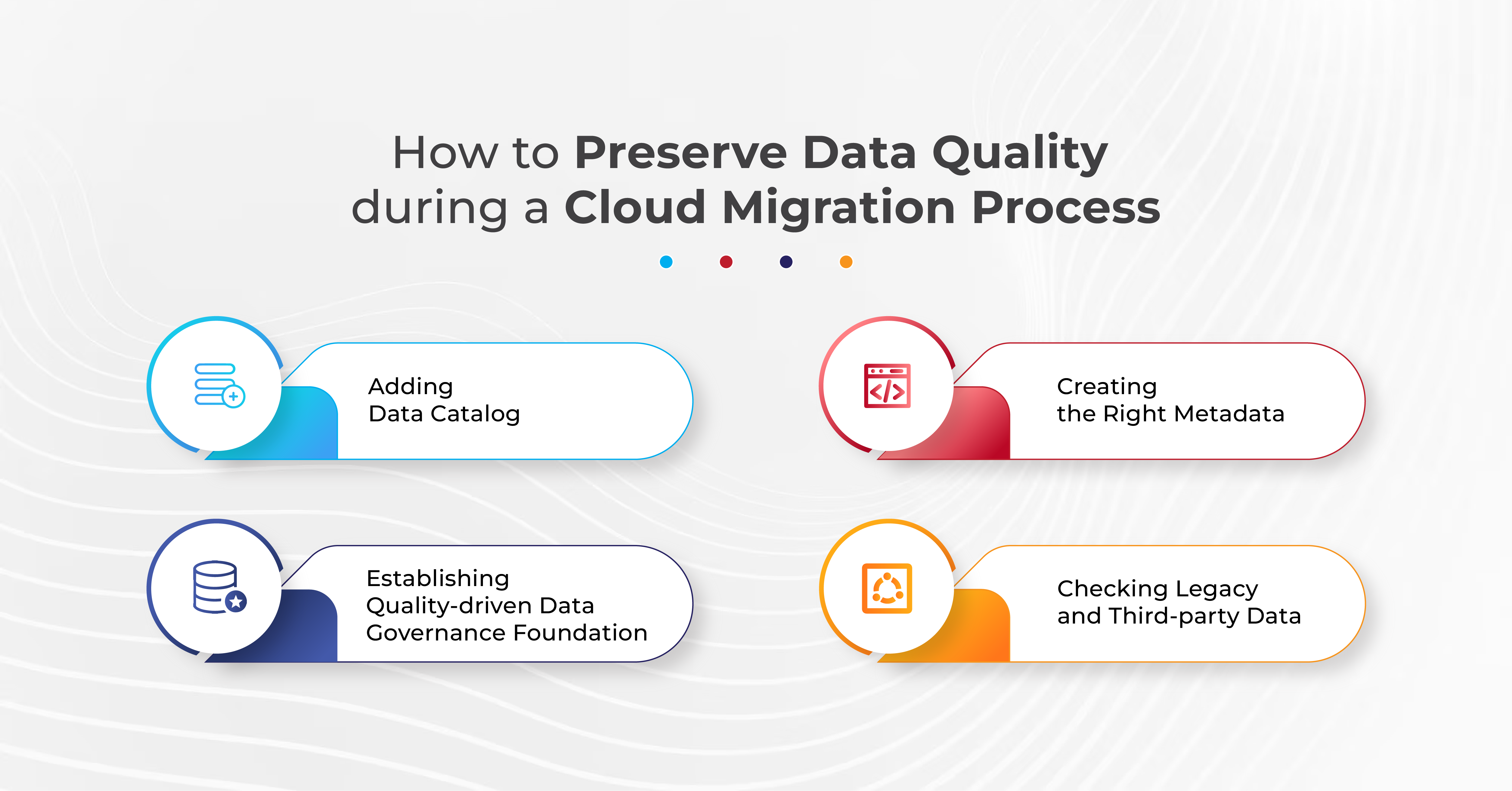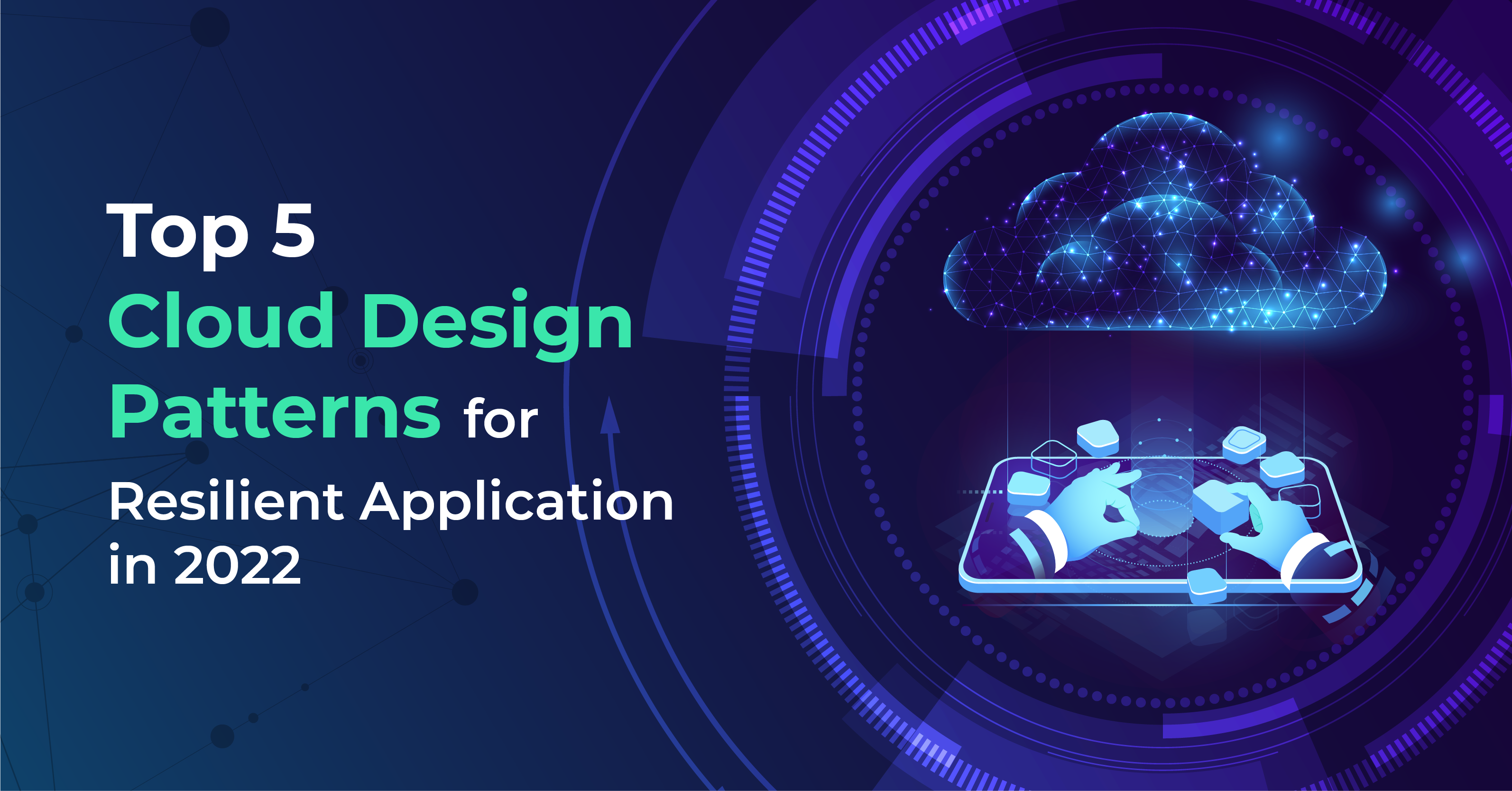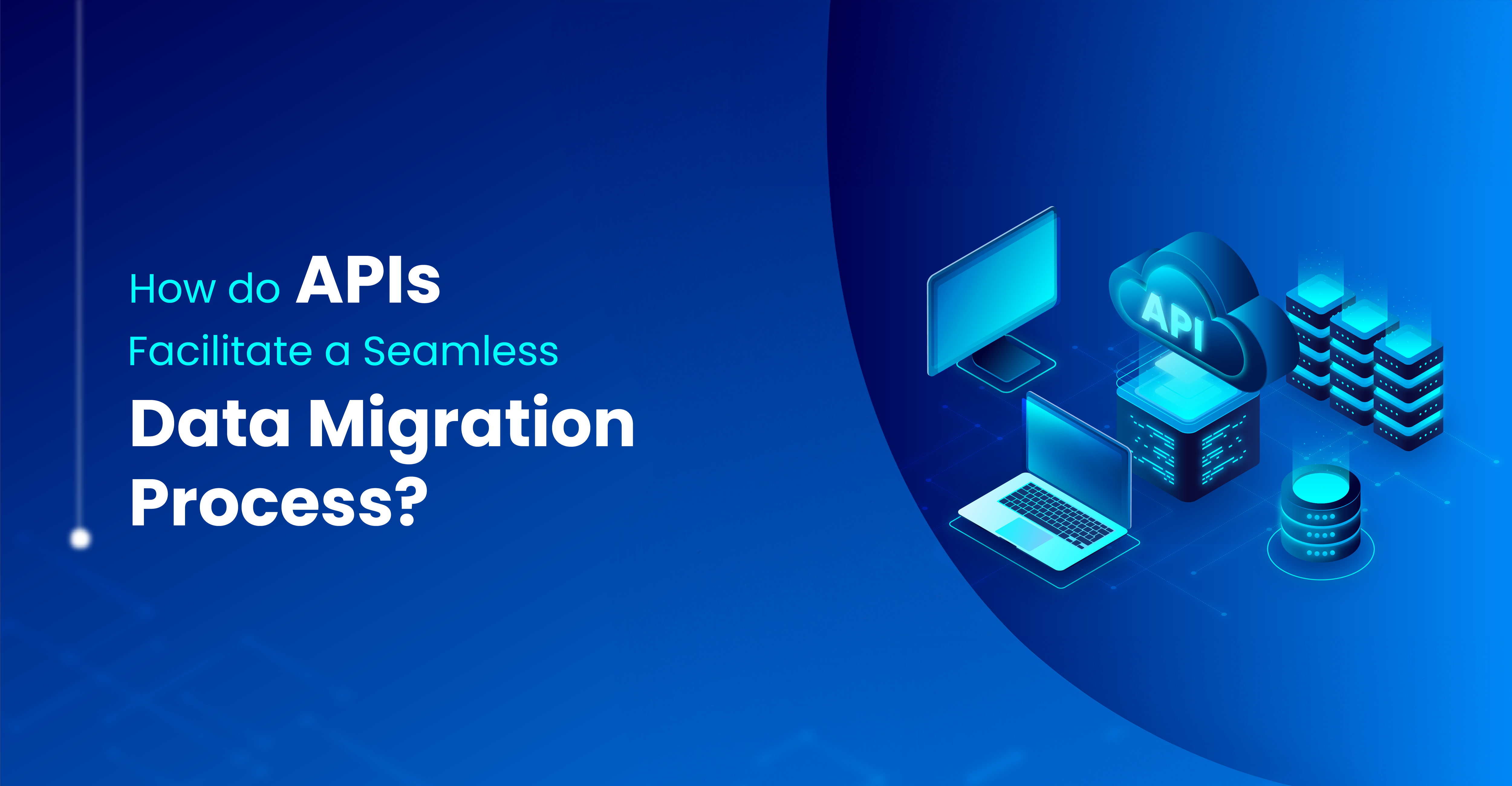If we go by the statistics:
- 94% of all enterprises use cloud services, and
- 48% of businesses store classified & essential data on the cloud
- By 2025, over 100 zettabytes of data will be stored in the cloud.
- According to Mordor Intelligence, the cloud migration market is expected to register a CAGR of 28.89% from 2022 – 2027.
Data modernization has brought dramatic changes in the IT industry as this has reinforced cloud migration strategies for businesses. Cloud migration is one part that enterprises look upon to leverage cost advantage, get greater flexibility in accessing data, and use data analytics for business.
This indicates the business value proposition brought by cloud migration, but what brings success to this is data integrity and data quality. Data migration is a complex process and involves planning, preparation, review, and testing.
Cloud migration is only perfect with having perfect data quality!
End-to-end data quality management and improvement processes enable companies to move more applications to the cloud and scale data quality across the enterprise. Cloud Data Quality ensures that business users can access and trust your data in their applications.
What are the Challenges in Maintaining Data Quality in Cloud Migration & Why does it Seem Difficult?
Tools bring the efficiency of work to fingertips, and in cloud migration, data quality acts as a tool that provides strength to analytics. Data quality defines the state of datasets and measures completeness, accuracy, and consistency that underpins improved operations & decision-making. But what makes it tricky? It’s often the practice of checking only traditional quality parameters like completeness, integrity, duplicacy, and overlooking parameters, like data drift, anomalies, and inconsistencies across the source result in data quality degradation.
With voluminous data sources and repositories, data teams must prioritize which data asset needs to be reviewed first. With this comes the lengthy process of change requests, impact analysis, testing, and sign-offs before implementing data quality rules. Consequently, more challenges come in maintaining data quality, which is as follows:
- Migrating data from outdated data models.
- Undefined role of data users & need for accountabilities.
- Merging data from multiple sources.
- Performing impact analysis before cloud migration.
- Challenges of fixing structural errors and unwanted observations.
Recognizing Risks to Data Quality
The good news is that more and more companies are migrating their data to the cloud. The bad news, according to Gartner, is that 83% of data migrations fail, go over budget, or need to meet their schedules.
One of the big challenges in keeping a data migration on track is ensuring the integrity of the data to be migrated. The following factors are a threat data integrity, including:
- Low-quality existing data
- Human error
- Transfer errors
- Configuration errors
- Malicious external actors
- Insider threats
- Compromised hardware
Hence, appropriate precautions must be taken to minimize the risks.
Ensuring Data Quality During Cloud Migration
Organizations can prevent operational burdens, reducing operating costs and lower revenues by preserving high data quality.
Let’s check some broader aspects and essential steps for maintaining data quality:
4 Broad Categories to Understand Critical Aspects of Data Quality
Discovery: The most critical details in a migration project include application dependencies, maintenance periods, and criticality. Precisely, the data points that must be gathered, verified, and kept, should be defined before you start your discovery process.
Profiling: Data profiling examines data to assess its reliability and caliber. Data profiling helps fill the gap in performances and aids in detecting data anomalies. It properly cleans, enriches, and loads high-quality data into a destination location.
Standardization:Data standardization is converting data from many sources and formats into a consistent format. Standardization helps to eliminate errors like incorrect field values and inconsistent capitalization, punctuation, acronyms, and non-alphanumeric characters. This spots the problems and anomalies in data and shortens the time to extract insight.
Deduplication guarantees that only the most accurate data is transferred to the cloud. Data deduplication makes data protection procedures faster and more effective by reducing the redundant data stored and sent over networks. Massive amounts of data can be stored and used for real-time insights into data governance.
The essential steps required for data quality revolve around these four pillars.
Let us explore the principal methodology of preserving data quality during a cloud migration process.

1. Adding Data Catalog: Data Catalog is a combination of metadata & data management tools that serve as a list of the data and information available to the intended consumers. This catalog shows data arranged according to the context, definitions, policies, usage, guidelines, and company ownership. After this, data lineage is performed for impact analysis to know the cause and effects of data quality concerns.
This process makes it easy to find, manage, and prioritize the data that needs to be transferred. Also, it makes every piece of data in the company, cloud, and on-premises discoverable through the data catalog.
2. Creating the Right Metadata: Metadata is the foundation of good quality data. Metadata provides documentation to make data relevant and enable it to be readily consumed by your organization. Metadata answers data users’ who, what, when, why, where, and how questions. Metadata is necessary to categorize the data correctly, determine the controls required to ensure quality, and establish which laws apply to the data.
For instance, financial data is covered by SOX; HIPAA covers healthcare data, etc. Some data applies to multiple regulations, while others are not regulated. Using regulatory compliance to your data is only possible with adequate metadata definitions.
3.Establishing Quality-driven Data Governance Foundation: A data governance program is in charge of managing enterprise data’s accessibility, usability, integrity, and security. Data Governance ensures the democratization of high-quality data on the cloud and enables collaboration as the data landscape grows. As a result, a business that practices excellent data governance will have more control over its information.
In the cloud, data is readily available to users; hence multiple copies are generated by different users, which questions the authenticity of data. Data governance, in this case, protects the trustworthiness of data traveling to and from the cloud. Data Governance ensures the democratization of high-quality data on the cloud and enables collaboration as the data landscape grows. As a result, a business that practices excellent data governance will have more control over its information.
4. Checking Legacy and Third-party Data: Before migrating to the cloud, fixing the errors is recommended. After migration, these quality tests raise the project costs and time of completion. Also, it is only advisable to move third-party data by determining whether or not it contains crucial customer data, particularly personal data, relevant historical data, transactional data, and others.
With data quality, there is migration! Cloud data projects see huge success when organizations ensure that the highest-quality data is in place with the right tools & processes. Good quality data is also much easier to govern & secure, and it becomes easy to identify sensitive & compliance-related data.
Conclusion:
Using Automation & Latest Technologies will Ensure Data Quality
Checking data quality helps to establish a solid data governance framework and control over cloud processes and data. Monitoring data quality and implementing corrective measures will help stop the migration process from going off the rails and becoming too expensive.
So organizations must focus on quality while migrating data to the cloud to drive new products, improve the efficacy & reliability of tools & processes, and reduce the TCO. The consequences of bad data quality are painful and lessen the effects of the migration process. Rather than manual testing, using automation & AI will enhance the practice of ensuring data quality. This will enable organizations to keep up with the volume, variety, & velocity of data.
Techment provides effective cloud migration solutions, ensuring data quality for enterprises to enable them to create impactful business decisions. To know more about our cloud migration strategies, connect with our experts.
 All Posts
All Posts


